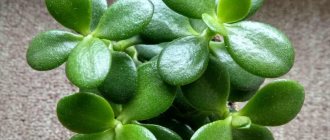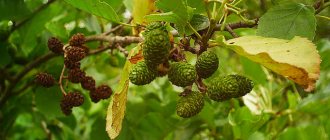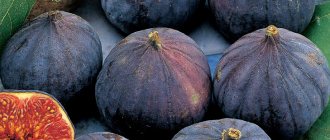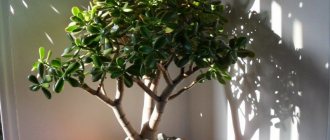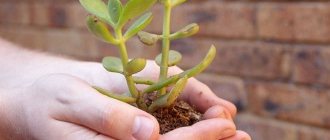Home page Wildlife World of plants
20 990 4.07 8
Despite the fact that Delonix Royal is considered by many to be one of the most beautiful trees on our planet and is cultivated in many countries with tropical climates, it is rarely found in the wild.
And in its homeland, Madagascar, this plant has practically disappeared: the tree has a wide spreading crown, in the shade of which other plants do not want to live, and therefore it was actively destroyed by local residents at one time. In addition, products made from this tree are highly valued due to its hard and dense wood.
Royal tree
Truly delonix is a royal tree. It has a spreading crown, and during the flowering period it turns red.
The plant belongs to the legume family and the subfamily Caesalpiniaceae. It reaches a height of 10-20 meters. It grows very quickly: up to 2.5-3 m per year. The trunk is thick, with smooth light bark in young plants and brown spotted bark in old ones. The older the tree, the thicker the trunk and the more flowers. The crown is very spreading, umbrella-shaped. The roots go very deep, so the tree can withstand strong gusts of wind. It has green fern leaves up to 40 cm. It is considered an evergreen crop.
Interestingly, at night the leaves fold and become almost invisible. If you shine a light on a tree, it appears as if it is on fire.
It blooms in warm climates in May-July, the flowers are scarlet (may be yellow in other delonix species). The fruits are pods up to 55 cm long. At first they are bark-colored, then brown, and when ripe they are black. There are 20-30 fruits in a pod, some of which fall out in wet weather.
The plant is drought-resistant, but very delicate relative to temperature conditions. In drought, to save moisture, it may partially or completely shed its leaves. Withstands temperatures not lower than -1°C. Otherwise, it dies.
Propagated by seeds, rarely by cuttings.
Delonix species
Legume family, subfamily Caesalpiniaceae.
Homeland: Madagascar, South Africa, Argentina, India. About 20 species are common in nature.
- Royal Delonix regia is a deciduous branched tree, reaching 10-15 m in length in nature and the spreading crown is approximately the same. The bark is thin gray in color, very beautiful from the point of view of a bonsaiist. The leaves are bright green, double pinnate, up to 50 cm long. Each leaf is divided into 20-30 pairs of leaves, each of which, in turn, is divided into another 10-20 pairs of oval leaflets. The petioles are much shorter than the leaves. With the onset of darkness, the leaves fold and droop. In appearance, delonix leaves resemble acacia. The flowers are large, zygomorphic, bisexual, collected in multi-flowered racemes, apical and axillary. Four petals are identical scarlet or salmon color, 5-8 cm long. The upper, fifth petal (designed to attract insects for cross-pollination) is distinguished by its color - bright yellow or white, with specks. Stamens are shorter than petals. The sepals are also brightly colored. The seed pods are truly gigantic; they can be 60-80 cm long and dark brown in color. Each pod contains 20-40 oblong seeds, 2 cm long. Below photo: new
- Delonix dwarf Delonix pumila is a caudex plant, native to Madagascar, reaching 1.5-3 m in height, and a trunk girth of about 40 cm, a crown span of 3-5 m. The bark is gray, the leaves are pinnate, each leaf is broadly oval in shape, very short petiole. The surface of the leaves is matte green, the flowers are very large, with cream petals, the fifth petal is yellowish. The stamens are almost twice as long as the petals, drooping, with bright anthers.
Delonix dwarf, like Delonix royal, can bloom at home with good care; a 3-4 month cool dormant period has a particularly beneficial effect on flowering.
Delonix is a greenhouse plant, it requires quite a lot of space, if you do not form it like a bonsai (it forms well by pruning, easily grows trunks), the branch span of a 2-3 year old bush reaches more than 1 m.
Homeland of delonix
Delonix royal fire is native to Madagascar, but is extremely rare there nowadays. It grows in warm countries with a tropical climate. Used for landscaping streets and parks. Today, the “fire tree” can increasingly be seen in squares, parks, on lawns, in landscape design compositions and in other areas with a suitable climate.
In the wild, it is practically destroyed, because other plants cannot survive in its shade at all. The extermination of the species also occurred because its wood is a strong, valuable species.
Cold climates are not an obstacle to growing royal delonix. It adapts perfectly to home conditions in any climate.
Classification
Oddly enough, the plant belongs to the legume family. They belong to the subfamily Caesalpiniaceae for their five-petaled flowers with ten stamens per flower. And they are legumes because at the end of flowering, pods appear on the branches of the tree, about half a meter long, brown or dark purple in color.
After ripening, about 40 seeds are formed in each of them, and from these we will try to grow this truly beautiful tree. The most favorable time for collecting seeds is from late October to early November, when flowering is completely completed.
Is it growing in Russia and Ukraine?
In Russia, royal delonix grows only where the climate is close to tropical. Thus, on the territory of Russia and Ukraine it cannot grow in open ground, since it does not tolerate not only frosts, but even mild frosts. But it is widespread as a tub plant or tree for greenhouses.
Delonix tolerates pruning well. Therefore, you can form a crown no higher than 2-4 m. You can also form a bonsai.
Formation of Delonix
Delonix tolerates pruning well, so it is often used as a potensai, forming it like a miniature tree in a bowl.
It also tolerates pruning of the root system well, if there is a need to regulate its relationship with the above-ground part. In nature, the shape of the crown of Delonix trees is not vertical, like that of birches, but horizontal, like that of acacias.
Most Suitable African Bonsai Styles:
- bushveld style bonsai (flat top)
- pierneef style or open-umbrella (umbrella shape)
Delonix grows quickly and vigorously, the shoot growing from the seed needs to be pinched when two leaves grow, but at first it is reluctant to branch, the problem is that pruning and pinching often does not lead to branching, but to the development of a new shoot, but in the singular.
In this case, instead of pruning, you need to do this: when the shoot grows to a certain length, bend it down with the crown and fix it in this position (use soft braided wire or woolen threads), the growth point at the bottom will stop developing, and a new growth point will be activated to replace it , the one that will be lower on the stem, but higher towards the sun.
Growing at home
Delonix royal at home is very well suited for the “winter garden”, where the temperature does not drop below 12-15°C. Plus, if you choose the planting method, this evergreen tree will brighten up your yard in the summer and your living room in the winter.
Under optimal home conditions, it blooms in the 4th year. Moreover, the duration of flowering increases compared to the “street” option. Blooms from May to September.
Choosing a place
It’s easy to learn how to grow royal delonix at home, thanks to the forums of amateur gardeners. This issue has already been well studied.
Delonix is not picky about soil. It will grow in any light, loose soil with good drainage. The plant is very photophilous and loves direct sunlight. Therefore, in a “winter garden” or greenhouse it is planted on the south or southwest side. In an apartment or house it must be placed near the southwest or south window. If these cardinal directions are not available, additional lighting will be required.
When a tub with a plant is taken outside in the spring, it is placed in the sunniest place in the yard. You can take the plant outside when the lower threshold of night temperature reaches 12-15°C. Previously, it’s impossible, it might get damaged.
Preparing and planting seeds
As already mentioned, most often the plant reproduces by seeds. At home, cuttings, as a rule, do not germinate. Seeds can be easily purchased in specialized stores or ordered from a reliable seller online.
Before planting, some preparation of the seeds will be required so that the seedlings appear quickly and are resistant to external negative factors. Before planting, the seeds must be immersed in boiling water for 1-2 minutes, then soaked in warm water for a day. It should be planted in a damp sandy mixture, then covered with film. The sand mixture should consist of sand and turf soil in a 1:1 ratio. To create natural germination conditions, the pot must be in a room with a temperature of at least +28°C.
To speed up germination, the seeds can be scarified, that is, the strong shell can be opened so that the sprout emerges without difficulty. Shoots will appear within a month.
Sprout care
Once the plant has sprouted, the most difficult thing is to preserve the sprout. The main thing at this stage is watering. It is important here not to overfill or underfill. Watering should be done fairly moderately as the soil dries, but at the same time the soil should dry out a little. If you miss watering, the plant may lose its leaves.
Related article: Sal description and features
In addition, the sprouts are still weak and may not tolerate direct sunlight. Therefore, they need to be kept in shaded sunlight: it is not scorching and it is warm.
Young royal delonixes need to be replanted annually. First, the pot, and then the tub, must be of sufficient size and tall, since the fire tree has a powerful root system.
Delonix photo
Royal Delonix (Delonix regia). Photo: er Guiri
Royal Delonix (Delonix regia). Photo: er Guiri
Delonix yellow.
Photo: Jan Smith Delonix has a strong root system, and often the roots emerge from drainage holes or even come to the surface. The volume of the container is chosen to be adequate to the size of the plant. The large leaf mass evaporates a lot of water, so regular watering is required during the growth period.
Delonix is drought tolerant and can shed some or all of its leaves. Complex leaves do not fall off immediately: first, small leaves begin to turn yellow and fall off, so the ground in the container and the entire surrounding space is littered with “autumn leaves.”
I usually do not wait for this moment, but cut off the entire yellow leaf before the “pollution” begins, leaving a small petiole. During the winter dormant period, watering is reduced, and the plant is moved to a bright, cool place, away from central heating radiators.
It has been noticed that during a pronounced dormant period, flowering is more magnificent.
Propagated by seeds and cuttings. Semi-lignified apical cuttings are usually cut in the summer and rooted in a loose soil mixture, preferably with bottom heating.
Delonix seeds are elongated-oval, about 2 cm long, and have a hard shell.
They remain viable for 2 years, and over time the shell becomes harder. To speed up germination, they are scarified - lightly filed with a small file, and soaked for a day in water or a damp environment (for example, in gauze or a rag, like cucumbers).
The seeds increase in size, and the transparent thin shell is partially torn and curled. They are planted in a loose soil mixture (or in the medium in which you are used to germinating seeds).
Shoots appear within a week, and sometimes earlier. The seedlings begin to develop intensively and after a few months turn into beautiful plants (for more information on growing plants from seeds, see the article).
Royal Delonix is an unpretentious tree with graceful fern-like leaves and beautiful flowers.
Time will tell whether seedlings can flower in indoor conditions. I recommend it for beginner tropical hikers!
It is difficult to say how delonix remained undetected until 1824. After all, by this time the forests of Madagascar had already been considerably cut down. Now Delonix is not uncommon.
He was quickly appreciated. They called it the fire of the forest and spread it throughout all tropical countries. Of course, there are many other bright trees in the tropics, but only the outstanding ones are called the flame of the forest. Delonix has one feature that many other tropical trees lack. In Africa, it blooms strictly on schedule - during the rainy season.
But in Malaya, where delonix is a guest, the climate is different, and delonix blooms on its own whenever it pleases. Each tree has its own rhythm of life and blooms when it wants. Therefore, in the forest in any season of the year there are flowering trees. They all never bloom at the same time.
But how different the flowers and fruits of delonix are. The flowers are stunningly beautiful, the beans are surprisingly inconspicuous. Like dirty brown scabbards for sabers, they hang on the branches for weeks. The seeds cannot fall to the ground. They are tightly tied on long ropes.
Their appearance attracts no one. Nobody eats them, nobody distributes them. So they rot without benefit “on a leash.”
The tree remains without offspring and gradually dies out in nature. The trees became fewer and fewer until Delonix remained on a small piece of land in the depths of Madagascar.
Rules for caring for an adult plant
An adult plant is unpretentious. Like ordinary crops, it requires watering, pruning, partial soil change, and fertilization.
Watering is moderate. The soil under the tree should periodically dry out well. The plant does not like overflow. In winter, during the dormant period, watering should be reduced to a minimum. Resuming moderate watering in the spring encourages mature trees to flower. Excessive soil moisture in winter will simply destroy delonix.
Air humidity is also important for wood. In hot weather, the crown can be sprayed with water, and you can also place a container with it near a pot or tub.
Partial replacement of soil involves only an annual change of the top layer. Here you need to choose the soil carefully so as not to damage the roots.
Feeding - from March to September with regular fertilizer; first for decorative deciduous plants, then for decorative flowering plants. It is better to feed in combination with watering.
Delonix easily tolerates any pruning: superficial and deep, crown and root. It is best to prune the plant to form the crown and roots after flowering, when the tree goes into dormancy. If you need to, you can trim off the extra branch at any time.
The plant will bloom if you provide it with optimal climatic conditions: temperature, watering, sun.
Care
It is necessary to organize drainage in a pot or tub in order to prevent stagnation of water and rotting of the root system. The fire tree grows quite quickly, so be prepared for the fact that after a year the delonix will need a larger pot.
And in general, it is advisable to replant young plants every spring, and adults after a year or two. When the tree reaches the age of 5-7 years and it becomes difficult to replant it, all that remains is to renew the upper third of the soil in the tub. Delonix responds positively to crown pruning, sending out new shoots and becoming thicker. From spring to autumn, it is necessary to provide the tree with abundant watering, very bright lighting, you can even place it directly under the sun, this will only have a positive effect on our hero. The air humidity should also be high; it will be better if you spray the foliage of the plant, but try not to get it on the flowers (if you have them, of course). From the onset of spring until autumn, periodic application of fertilizer is required, with breaks of 2 weeks, this will stimulate flowering - after all, this is exactly why you should start a fire tree. With the end of flowering and until spring, it is necessary to organize periods of rest; for this, the temperature in the room is reduced to +10...+12 degrees, or the tree is taken out to the balcony (but the temperature is not allowed to drop to -1 degree - the death of the plant is possible), and watering is reduced. You should not be upset if the delonix has dried out; the plant will interpret such external influence as lack of watering as the arrival of autumn, and it will most likely shed its leaves and stop blooming until the next “in its opinion, spring.” A short summary: the better our hero rests in winter, the more abundant flowering awaits you in the spring.
Diseases, pests and other difficulties
Among the diseases of the royal delonix, the most common are scale insects and spider mites. To combat them, a special product is sold in gardening stores. They need to spray the above-ground part of the plant - and the problem is solved.
The shield can even be assembled by hand. If the plant is still small, this will not be difficult.
Besides pests, there is another problem. The tree grows very quickly, so it requires constant monitoring of the crown. If you want the plant to look well-groomed (especially if it is a bonsai), inspect the crown weekly and trim off excess shoots.
The tree is unpretentious, and if your choice falls on it, it will not cause you much trouble. The plant is beautiful both in bloom and at rest. Delonix royal will not leave any amateur florist indifferent.
Breeding
The tree propagates in two ways: by cuttings and by planting seeds in the ground.
- To propagate by cuttings, it is necessary to cut a branch from a plant with an already woody trunk, but not too thick. Next, you need to treat the bottom of the cutting, where the root system will develop, with a special solution - a growth stimulator. Before planting, you should prepare the soil: there is nothing special in it - mix peat soil and sand in a 1:1 ratio. After all the preparatory procedures, we plant our future tree in a container with soil, water it well, and cover it with a transparent film, or a jar, and place it in a shaded place with a temperature of about +27 degrees. Further, our participation will consist of monitoring the plant and regularly moistening the soil. As soon as new leaves appear, you can take apart our greenhouse, we can congratulate you, now you have your own royal tree!
- The second and most popular propagation method is to grow Delonix royale from seeds at home. It’s not very difficult to get seeds now, if you are vacationing in warm countries in late autumn - early winter, you can collect them completely free of charge, fortunately, quite a lot of delonix are grown in warm countries. If you don’t plan to travel abroad, you can buy them in the now widespread online stores. To stimulate seed germination, you can go in two different ways:
- prick the seed with a needle and then put it in warm water for about a day;
- put the seed in boiling water for a couple of minutes, and then add cold water to the same container, and wait the same day.
During this time, the seeds must gain enough moisture to begin growth. For more stable germination, you can also add growth stimulants to the container; this will not do any harm. Next, we plant the seeds in moist soil at a shallow depth and sprinkle them with a little soil, we also create a mini greenhouse using the film we are already familiar with and place it in a room with a temperature of +27 degrees. Well, then follow the already familiar path: moisturize, observe (in no case should you soak too much, rotting is possible) for 2-5 weeks.
Botanical description
Delonix is a medium-height tree. Adult specimens reach 10–12 m. The diameter of the trunks in the lower part is up to 50–70 cm. The root system is developed, penetrating to a depth of 2–3 m. The genus is not wind-throwing. The bark is dark, gray-brown, smooth when young, then becomes covered with cracks. The side shoots are densely branched. The crown is spreading, umbrella-shaped.
The leaves are dark green, double pinnate . The length of the complex plates is up to 50 cm. On the central petioles, 7–9 pairs of branches are located oppositely, each having 10–15 pairs of small oval-elongated lobes. At night, the plates are folded in half along the cuttings and straightened out in the morning. Delonix is a deciduous plant, but its greenery does not fall seasonally, but only during long dry periods. In regions with year-round abundant rainfall, the crowns remain green all the time.
The flowers of the fire tree are bisexual, large, bright red or yellow, collected in dense axillary inflorescences. Corollas up to 12 cm, with five multidirectional elongated petals. The upper petal is larger than the rest, in the form of a wide tongue, usually variegatedly colored. Its light pink surface is dotted with burgundy specks. The stamens are elongated, velvety, 8–10 pieces on one flower. The pistils are light yellow and short. Plants begin to bloom for the first time at the age of 3–4 years, reaching full maturity by 10 years .
The fruits are large pods and ripen in September or October. The length is more than half a meter, the width is 5–6 cm. The leaves of green beans are light brown, as they ripen they become dark purple or brown and become woody. The beans are dark, smooth, 2–2.5 cm in size.
Delonix is growing fast. In the tropics it grows up to 2 m per year. Insensitive to insufficient soil nutrition and prolonged droughts.
To what does the fire tree owe its beauty?
Of course, to his flowers. The color varies from bright red and red with white splashes – “feathers” – to deep yellow. When open, the flowers reach a diameter of 10 cm. The flowers are five-fingered - four petals of which are most often the same color, wide open, and in close proximity to the fifth there is a pistil with ten velvety stamens. This fifth petal is different in color from the other four; in various literature it is called “sail”.
The main flowers emerge from a calyx that opens into five sepals during flowering. Pollination is cross-pollination and occurs by insects attracted by the same “sail”. By about 10 years the tree becomes “sexually mature.” Of course, the tree begins to bloom at 3-4 years, but the buds are not capable of setting into pods at that age. The flowering period lasts approximately two months and by autumn pods form on the branches. What is noteworthy is the beauty of the tree itself, as well as the number and size of flowers, is directly proportional to the age of Delonix. In addition, the number and size of flowers, and therefore the beauty of flowering, is also affected by the previous winter: if it was dry and the temperature was in the range of +8...+14 degrees Celsius, then the flowering will be very abundant.
Spreading
Delonix was first discovered in the early 19th century in Madagascar . This was done by the Austrian biologist Wenceslaus Boer, who arrived on the island with a scientific expedition. In their homeland, trees were actively cut down: they spread and were restored quickly, and powerful roots and dense spreading crowns did not allow other species to develop.
Gradually, the fire tree disappeared from the wild . But it began to be used as an ornamental plant. Several species are grown in Northern Australia, southern Brazil, Hong Kong, the Caribbean, the Canaries, Thailand, and other regions with suitable climatic conditions.
general description
Delonix is not without reason called the royal tree , because the plant has a spreading crown, which acquires a very beautiful color during flowering. The plant was first discovered in eastern Madagascar by a naturalist from the Czech Republic named Wenceslas Boer.
The fire-tree is one of the many representatives of the Legume family. Its height reaches 15-20 meters. Delonix is characterized by very active growth. So, in a year it can grow by 2.5-3 meters. In young plants, the bark is completely smooth and quite light; in adult plants, it becomes spotted. The number of flowers and the thickness of the trunk depend on the age of the plant. The oldest trees have very beautiful crowns. The root system goes deep into the ground, so Delonix can easily withstand even strong winds. The length of its leaves reaches 40-45 cm.
It is noteworthy that with the advent of darkness, the foliage of the plant curls and becomes barely noticeable. If you light a tree, you might think it is on fire. Delonix's closest relatives are:
- bean;
- wisteria;
- caragan;
- mimosa;
- cercis;
- acacia.
The tree blooms from May to July. It is not afraid of drought, but it requires a certain temperature. During the dry season, the plant may completely or partially lose its leaves. The temperature for keeping Dionyx should not fall below -1 °C, otherwise the tree may die. It is mainly propagated by seed, but cuttings are also practiced among experienced gardeners.
Varieties
In total there are more than 20 types of delonix. 2 of them are common in culture:
- Delonix dwarf (lat. Delonix pumila). Low spreading tree. It stretches up to 2–2.5 m. The crowns are umbrella-shaped and dense. The leaves are carved, pinnate, with many small, broadly oval blades. The inflorescences are large, cream-colored or bright orange.
- Royal Delonix (lat. Delonix regia). It was this species that received the name “fire tree”. The trunks are up to 12–14 m high, the crowns of adult plants are hemispherical. The flowers are bright scarlet or dark orange. The inflorescences are large. In the evening hours, due to the inconspicuous folded leaves, flowering trees appear to be on fire.
In regions where the climate allows for growing trees in open ground, they are planted along the sides of roads, sidewalks, in parks and gardens. Wide, dense crowns cast a dense shadow, and recreation areas are arranged under them.
Flaming tree of Madagascar
Delonix Royale is a flowering tree of the Legume family of the Caesalpiniaceae subfamily. Despite the fact that this plant is native to Madagascar, it is almost never found on this island. This plant is actively used in landscaping and decorating streets and parks in countries that are located in the tropical zone - primarily the Caribbean and Canary Islands, Africa, Northern Australia, Hong Kong, Thailand, Southern Brazil.
Interestingly, Delonix has several names, which it received due to the fact that during the flowering period (in the northern hemisphere it lasts from May to June) it is completely covered with red and yellow flowers, which are not inferior in beauty to orchids. The most popular names are the Flaming or Fire Tree, the Red Flame, the Indians call it the Peacock Flower, the Bengalis call it the Crown of Krishna, the Vietnamese call it the Tail of the Phoenix.
Growing
Delonix is picky about lighting levels . It is recommended to place it near southern or southwestern windows. In cloudy weather or winter, you need to use fluorescent lamps. The crowns of a 2–3-year-old tree spread over 1–1.5 m; care should be taken to ensure sufficient space.
Delonix can be grown from seeds:
- Before planting, the material is scarified, otherwise the dense shell will not allow sprouts to break through. The peel is carefully filed or pierced with a pin. You can pour hot water over the beans and leave them to swell for a day. It is advisable to add a little growth stimulant.
- For germination, small pots are used with a mixture of equal parts of sand, turf soil and peat. Beans require a lot of oxygen - they should not be buried, just cover them with a layer of soil 2-3 mm thick.
- The surface of the pots is covered with film and kept under 24-hour lighting. Plants can be placed under an LED lamp.
- Every day the soil surface is sprayed with water from a spray bottle. The room temperature is maintained at about 27–28 °C.
Article on the topic: Acacia Farnese description and features
After the sprouts appear, the film is removed . After 3–4 months, the plants are transplanted into larger containers. The soil is preferably loose and neutral. The maximum pH level is 6.5. A mixture of peat, garden soil, and river sand is suitable. You can add ⅛ of the volume of small pebbles. Before planting, the plant is provided with drainage from stones or scraps of foam, laid in a thick layer on the bottom of the pot.
The plant needs air with a humidity of 50–70%. In a dry atmosphere, it is advisable to place open containers of water next to the container. It is not recommended to place the crop near heating radiators: it may shed its leaves.
In spring and summer, in sunny weather at a temperature of at least 17 °C, the container with the tree can be taken outside. The optimal heat level for active vegetation of delonix is 27–30 °C. Not afraid of intense heat. In late autumn and winter, the tree should be provided with a period of rest, gradually reducing the temperature to 10–12 °C. In winter, it is necessary to reduce the frequency of watering to twice a month. Stagnant moisture during the cold season can cause root rot.
The houseplant blooms longer than in nature . The buds remain on the branches from May to September. During spring and summer, growth can be up to half a meter. To form a dense branching crown, the stems need to be pinched regularly. This is usually done in April. If instead of several branches in the pinching zone a single shoot continues to grow, it is bent down and secured with wire. This will allow branches to develop from the lower growing points. More often, delonixes are formed as a bonsai with an umbrella crown. Excessively growing roots can be trimmed regularly. Delonix tolerates any type of haircut well.
Pets should be kept away from the tree. The juice of its leaves is poisonous and causes severe intoxication in cats and dogs. Small children should also not touch or pinch greens and flowers.
Watering, transplanting and fertilizing
Watering is necessary frequently, but moderately. Overdrying of roots and waterlogging of the soil lead to the death of the plant. To regulate the water content in the soil, the surface of the pot can be covered with damp moss. When watering the crop, you need to make sure that the drops do not fall on the blooming flowers.
The plant is replanted annually until the tree is 4 years old. For adults, regular updating of the top layer of soil is enough.
Fertilizers are applied throughout the growing season. Nitrogen and potassium-phosphorus compositions alternate every 2 weeks. When updating the soil or replanting a crop, humus can be added to the soil. Its nutritional value is enough for almost 2 months. Fertilizers may not be applied at this time.
Born on the Madagascar Islands, royal delonix tirelessly continues to surprise ordinary people with increasingly sophisticated epithets. And this is not without reason, because it is considered one of the unusual plants on the planet and fully justifies all the laurels assigned to it. A descendant of fire, a tree engulfed in flames, a royal flame, a phoenix... you can’t count them all, and that’s not the main thing. Royal Delonix is a tree that anyone, even a novice gardener, can grow.
Content
- Homeland of delonix royal video
- Taxonomic affiliation. Appearance Features
- Planting royal delonix, main activities
- Care features that ensure optimal growing conditions
- Delonix royal as an object of landscape design
Homeland of royal delonix
Under natural conditions, royal delonix grows in many countries for which hot climates are common. But only the Madagascar Islands, South Africa, Argentina and India can rightfully be considered the birthplace of the fire tree, which should be proud of a native of their latitudes. But, despite its tropical origin, delonix is not afraid of prolonged droughts, and only frosts can destroy the fiery creation of tropical latitudes.
A decrease in temperature to one degree below zero is the limit at which Delonix royal is able to maintain normal life functions. In the wild, the royal delonix tree is considered an endangered species, but not everything is as bad as it seems at first glance. Due to the high practical value realized in hot countries, royal delonix is successfully cultivated in many countries. In particular, the countries of South America can boast of this, where the fire tree was brought in the 17th century.
Taxonomic affiliation. Appearance Features
Delonix royale, being a perennial plant belonging to the legume family, has a number of characteristic features. The fire tree is characterized by specific features of its growing season: when growing in regions with a high level of insolation, which causes long-term preservation of high temperatures and low humidity levels, Delonix, in order to save moisture, sheds its foliage for several months. In tropical zones, it has established itself as an evergreen plant.
The appearance of the royal delonix is also surprising with its features. The characteristic emerald green leaves can reach half a meter and are divided into several dozen pairs of small leaves, which also undergo division to form oval-shaped leaves. The flowers are bright red, collected in multiple inflorescences. Externally, Delonix can be compared to a fireball, the flames of which can captivate even the most selective viewer.
If you decide to create a fiery spectacle on your site, then the first and only thing you should do is plant royal delonix. You can easily buy seeds in any online store specializing in the sale of seeds of ornamental plants.
Planting royal delonix, main activities
Before planting Delonix, you need to carefully select a site, since the Royal Delonix tree is very picky in terms of light levels. It is preferable to choose an area characterized by bright, diffuse sunlight, taking into account short exposure to direct sunlight.
When it comes to choosing soil, you need to know that royal delonix, a photo of which you can see in the article, is very tolerant of soil characteristics and can grow in a wide range of acidity levels. The only thing that needs to be ensured when choosing soil is high-quality drainage and aeration, since people from Madagascar have an extremely negative attitude towards stagnant moisture.
Delonix can be propagated either by cuttings or by seeds, and the second method is the most acceptable, even taking into account the mandatory scarification of seeds.
The seeds of the royal delonix are quite large, oval in shape, enclosed in a shell of high hardness. In this regard, before planting, the seeds must be scarified or softened, which is most easily done by dousing the seeds with boiling water or acid. After scarification, the seeds must be soaked in warm water for 24 hours and only then sown in the prepared soil, not forgetting to remove the swollen protective shell. Within a week, the royal delonix will begin to delight you with the appearance of young shoots, which over the course of a month will grow intensively and take on all the shapes of a young tree. Flowering of a tree planted using cuttings will begin earlier than with seed propagation.
Care features that ensure optimal growing conditions
Features of caring for royal delonix are directly dictated by the natural conditions of its growth. As for watering, the spring and summer periods should be associated with abundant watering from the nature of the tropical plant, the winter period should be a time of moderate watering. But, despite all of the above, royal delonix is a very drought-resistant plant. The need for high ambient air humidity, vital for the fire tree, is also due to its tropical origin.
An obligatory measure for caring for delonix is the annual tree transplantation, which is carried out mainly in the spring. When replanting, you need to take care of the quality of the soil mixture, the optimal composition of which is considered to be two parts of turf and leaf soil and one part of sand. At the same time, we must not forget about the need for high-quality drainage.
In order to provide the fire tree with optimal growing conditions, it is necessary to remember the need for fertilizing, which is carried out mainly from mid-March to the end of autumn at intervals of once every two weeks.
The good news is that royal delonix is practically not susceptible to attack by pests and diseases. Isolated cases of morbidity and damage by pests are caused by violation of lighting conditions and improper watering of ornamental plants.
Delonix royal as an object of landscape design
In ornamental gardening and landscape design, the royal delonix has gained maximum recognition. Its unpretentiousness to the quality of the soil determines the tub cultivation of the fire tree. When growing delonix, it is important to remember the unusual characteristics of the wonderful tree, one of which is its profuse flowering when watering is limited over the last few months.
Knowing that the royal delonix tolerates pruning favorably, landscape designers use this to their advantage, forming a plant of the desired shape and size from a spreading tree, which is also important for tub growing and cultivation for bonsai. Recently, dwarf forms of royal delonix, reaching three meters in height, have become known.
Author: Sergey and Svetlana Khudentsov
10
Reproduction
It is rarely possible to obtain mature seeds from domestic crops. Propagated by cuttings. It is recommended to use apical shoots that have not yet completely lignified. They are harvested in early June. Before placing in the nutrient mixture, the material is immersed for 12 hours by cutting it into a glass with a solution of a growth stimulator.
For rooting, the plant is deepened into moist vermiculite . You can use a mixture of coarse sand and peat, pouring it into a spacious transparent bag. Every day a little water is added to it and aired. The cuttings are kept at a temperature not lower than 27 °C with 24-hour lighting. After sunset, LED lamps are required.
Description:
Container
The culture is sold in containers of 5-12 liters. The tree grows intensively and has a deep, highly branched root system, therefore it is recommended to select a container for permanent cultivation in the future. The appropriate volume is 45-100 liters. To avoid stagnation of water, it is necessary to install high-quality drainage.
The soil
Soil composition: black soil, humus, sand in proportions 2:1:1. It is advisable to add up to 20% perlite or vermiculite to the resulting mixture. The substrate should be moisture-absorbing, but at the same time easy to drain. The pH reaction is slightly acidic or neutral. It is recommended to update the top 1/3 of the soil in the container annually. To remove soil, use the method of washing out with a stream of water.
Ecosystem
A very light-loving plant. In a room without lighting, successful cultivation is basically impossible. When placing a tree outdoors, you must choose the sunniest place. Wintering only in the light. The range of comfortable temperatures during the growing season is +18-30 degrees. The plant is demanding of air humidity; if there is a lack of it, it will shed its leaves and may die. Staying indoors near heating devices is very dangerous. Needs regular spraying and responds well to a warm shower. At the same time, strictly control that water does not get on the open flowers - under the influence of moisture they rot and crumble.
Watering
The plant is intolerant to soil drying out, especially in summer during flowering. Regular but moderate watering is necessary, but waterlogging and waterlogging are also destructive. Use only warm water. A decrease in soil moisture serves as a signal for the plant to come autumn; it stops flowering and begins to shed its leaves.
Summer
You can take it outside only after night temperatures have risen above +12-15°C. Control temperature changes, preventing temperatures below +10 degrees. Does not tolerate frosts.
Winter
Wintering in group 3. This is the most important stage in the plant's seasonal cycle, as its conditions greatly influence summer flowering. The optimal air temperature during the period of biological dormancy is +10-12°C. Watering is reduced. Sub-zero temperatures and any hypothermia of the earthen coma are categorically unacceptable.
Diseases and parasites
If the conditions of detention are observed, there is no need to be afraid that the fire tree will get sick. Drying or falling leaves may indicate a lack of moisture or light. The problem can be corrected by adjusting the mode.
Of the parasites that are dangerous to delonix, scale insects and spider mites . Infection can occur due to the use of poor-quality soil or the location of the tree next to succulents: cacti, aloe. If insects are found, they can be collected manually and the crowns can be sprayed with garlic infusion. If this does not help, it is recommended to use insecticides.
History of discovery
Why do you think the hero of the article is called royal? This name was given to it by the botanist from Austria Wenceslas Boer, who in 1822, together with his colleague Hilsenberg, Prince Rafal of Malagasy and a representative of the British government James Hastley, traveled to Madagascar, where he discovered delonix. So it was named royal in honor of King Radam I, who kindly met them during the trip. And the beauty of the fire tree encourages us to call it royal.
General description of the plant
Delonix royalis is a deciduous tree of the Legume family, characterized by:
- Powerful taproots growing from the trunk and giving the tree stability. They are so strong that they break through asphalt and destroy nearby buildings.
- A tall (10–20 cm) trunk covered with smooth bark, changing color as it grows from light to brown with dark patches. Every year the trunk grows 3 m higher, reaching its maximum size by 3–4 years.
- A spreading crown with a diameter equal to the height of the trunk, during flowering it turns into a huge fiery umbrella.
- The unusual shape of long (up to 50–60 cm) bright green, double-pinnate, short-petioled leaves, reminiscent of ferns. They grow in August after flowering, and every evening they fold and droop.
However, delonix gained worldwide fame thanks to its unrivaled flowering beauty.
In the spring, before the leaves appear, a huge number of large (up to 10 cm) buds are formed on the branches of delonix, collected in apical or axillary racemose inflorescences of bright red, scarlet or orange shades. Each flower is formed by five petals with jagged edges and bases that sharply taper towards the center. Four of them are identical in shape and shade, the fifth has the shape of a sail and is colored with light specks or peculiar strokes. The central part of the bud is decorated with a pistil with a dozen velvety, long and upward-curving yellow-red stamens.
The flowering period is 2–2.5 months. In place of the pollinated buds, fruits develop that quickly increase in size - flat pods about 4 cm wide and up to 60 cm long, changing color from green to dark purple, brown or black. Inside the fruit there are 20–30 seeds, 2–3 cm long, covered with a hard dark shell.
Related article: Shinus description and features
Delonix. Features of the tree.
Delonix was discovered in a remote corner of Madagascar in 1824. A wonderfully beautiful tree. Huge fiery red flowers the size of a fist hang in short racemes. Half a meter long, the openwork complex leaves are barely visible from behind the flowers and only emphasize their brightness.
The crown spread out widely to the sides, reminiscent of umbrella acacias.
Delonix regal, or Fire Tree, can be found in many countries with tropical or warm climates, where it is planted in parks and streets.
One of the five most beautiful trees in the world. This tree with a spreading crown in the shape of a wide umbrella reaches a height of 10 m. Elegant double-pinnate leaves 30-50 cm long resemble a fern, and fold at night.
In areas with a pronounced dry season, delonix sheds all its leaves, but if the amount of precipitation in winter and summer does not differ much, it remains evergreen or sheds some of its leaves.
In spring and early summer, the tree is covered with large bright red flowers, about 10 cm in diameter, collected in large clusters. The flowers rival orchids in beauty and consist of four red stalked petals and one larger vertical petal with yellow and white spots.
Flowering trees are a delightful spectacle that lasts for 1-2 months. A flaming tree, under whose crown a luxurious green carpet with precious flowers unfolds - an oriental fairy tale, and nothing more!
Later, lignified flat pods up to 60 cm long containing large seeds are formed. They hang all winter and fall to the ground in the spring. Both pods and seeds can be used for decorative purposes.
Delonix royale was first discovered by Wenceslas Bojer in a place called Foulpointe, located in the eastern part of Madagascar.
Bojer suggested the name Poinciana regia to William Jackson Hooker, who published the name in 1829. The plant was named after Commodore Blondel de Lonvilliers de Poincy, the first French governor of the West Indies (early 17th century).
A few years later the species was renamed Delonix regia.
Delonix is a fast-growing tree, but it reaches its maturity in about 10 years.
This does not mean that you will have to wait the entire decade for flowering; there are reports on forums that the first flowers appeared already 3-4 years after sowing the seeds. It tolerates pruning well, so you can form a tree of the size you need, which is very important when growing delonix in a container (or for bonsai).
There is also a dwarf variety, up to 3 meters high, with yellow-orange flowers.
Delonix prefers direct sun or light partial shade. In the shade it grows “lanky”, with a large distance between the leaves.
My delonix stands on a glassed-in balcony in the summer, in direct sun, the plant grows more luxuriant, does not stretch, and looks much more attractive than its shadow-plagued counterparts. It is not picky about soil, but grows best in a well-drained soil mixture.
Where does the fire tree grow?
Delonix is native to Madagascar. From this island, the seeds of the Fire Tree were brought to Japan, China, India, Northern Australia, and then to Africa and the Caribbean islands.
Delonix royal grows in areas with tropical and subtropical climates, which exclude the presence of minimum sub-zero temperatures. This condition determines the area of its growth.
In Russia, the plant is not cultivated in the open air, but if desired, a smaller copy of it can be grown as a bonsai or as an ordinary indoor flower.
How to grow delonix royale at home?
The use of this plant as a home goes in two different directions: it is grown as a tub tree or a work of art is created - a bonsai. In this article, I will not tell you in detail how to grow a bonsai, since this is a separate, large topic, and it requires separate research, but I will tell you about what kind of care the Royal Delonix requires at home. I’ll just give you an image of the beauty you can get. So, we have sprouts from seeds or sprouted cuttings, now we need to choose a suitable tub, not very large to begin with, we determine the sunniest place in the room and install our newly made tree there.
Growing Delonix at home
The tree reproduces by seeds. The process of growing adult plants from seeds is lengthy and requires pedantic implementation of all plant care recommendations during the first 2–3 years.
Requirements for soil and pot
The plant is planted in large pots that have a good drainage compartment and holes for water drainage. In spacious rooms, winter gardens and greenhouses they are grown in tubs.
The fire tree is not demanding on the composition of the soil, but it is important for it that the soil is light and loose and freely allows air and moisture to pass through. These properties are possessed by a mixture of leaf and turf soil (2 parts each) with the addition of coarse river sand or small (3–5 cm) pebbles (1 part).
The plant is not picky about soil acidity, but does not like strong alkalization.
Preparing and planting seeds
Delonix seeds are covered with a very dense shell, so they take a long time to germinate.
To speed up the process, before planting they are processed using one of the following methods:
- Place in boiling water for 2–3 minutes, then dilute it with cold liquid so that your hands are comfortable and leave for a day without additional heating;
- pierce or file the seed shell with a sharp object (an awl, a thick needle, a file), and then leave it for 24 hours in a solution of a drug that stimulates tissue growth (Zircon, Epin).
Planting is carried out in small containers filled with a damp mixture of sand and turf soil (1:1), peat and vermiculite (1:1). It is difficult to determine the location where the sprout and roots emerge from the appearance of the seed, so the seeds are placed horizontally and covered with soil 2–3 mm deep.
The surface of the container is covered with a transparent, airtight material, simulating a greenhouse with an air temperature of at least 27 °C. Every other day, the seedlings are ventilated. When the top layer of soil dries, lightly moisten it.
If optimal conditions are met, sprouts will appear in 1–1.5 months. Slow germination gives way to a rapid (10–15 cm per month) process.
Rules for caring for sprouts and mature trees
An important point in growing delonix from seeds is caring for the seedlings.
They are so tender and weak that they can die from direct sunlight or slight overwatering.
For this reason, young plants:
- placed in partial shade or darkened from direct sunlight;
- Water moderately, focusing on the condition of the top layer of soil: it should always be slightly moist. The plant reacts to a lack of moisture by shedding its leaves and looks unattractive before it increases;
The first flowering will have to wait 3.5–4 years. As a reward for your work and patience in indoor conditions, delonix blooms a month longer than its “outdoor” counterparts.
Caring for an adult plant is less burdensome and consists of proper placement, watering, feeding, replanting, pruning and organizing a rest period:
- From spring to autumn, the flower is placed in a warm (20–25 degrees) and bright place - on the windowsills of south or south-west windows. In summer they are taken out into the open air.
- During flowering (from May to September), delonix is watered rarely, allowing the top layer of soil to completely dry to a depth of 2-3 cm. During leaf growth, watering is increased.
- From March to September, indoor specimens are fed. Before flowering begins, mineral additives are applied for decorative deciduous plants, and from the moment the first buds appear, fertilizers are applied for decorative flowering forms. Fertilizing is combined with watering, using solutions in concentrations recommended by the manufacturer.
- Young (up to 3 years) plants are replanted annually, changing the container to a more spacious one. Adults - as the entire volume of the pot is filled with roots. In very large specimens, they limit themselves to an annual change of the top (2-3 cm) layer of soil.
- In spring, the main shoot of the plant is shortened. In the fall, after flowering, the crown is formed by pruning, giving it the desired appearance. The fire tree tolerates these procedures painlessly.
After autumn pruning, the flower is forced to rest.
- move to a cooler (10–12 °C) place;
- stop feeding;
- reduce watering, allowing the entire earthen clod to dry out.
The flower will react to the cessation of moisture by turning yellow and dropping foliage. After 2-3 months, watering is gradually resumed, which will lead to the growth of side shoots and the formation of buds.
The longer a flower rests, the more abundant and brighter its bloom will be.
Reproduction of Delonix
Delonix propagates by stem cuttings and seeds. Propagation by cuttings is difficult; for rooting, the apical semi-lignified cuttings are cut off at the beginning of summer. Root in water or damp vermiculite, heated at about 25-28°C, good lighting and high humidity (in a mini-greenhouse or sealed in a zip bag).
Seeds can be purchased at a flower shop, choose the freshest ones - they remain viable for 2 years (see packing date), there are usually 3 seeds in one package. Sow at any time of the year. The seeds are oblong, large - 20-25 mm long, with a hard shell. They need to be stratified - carefully filed with a file, or pricked with a needle, then soaked for a day in stimulants. You can use the drugs Narcissus, Zircon, Rostock.
Another way to prepare Delonix seeds:
First, they are immersed in boiling water for 2 minutes. After this time, add cold water so that the water is hot and tolerable for the hand. And leave until the water cools down. After a day, the seeds are removed from the water (by then the skin will wrinkle and soften, there is no need to remove it), and planted in a mixture of peat and vermiculite, or peat and sand in equal parts. With this method, the seeds do not need to be cut.
Sowing in moist, loose soil consisting of 1 part universal peat soil and coarse river sand (washed from dust). For sowing, take enough pots with a volume of approximately 350 ml. Delonix seeds require access to oxygen during germination, so they are not buried deep in the ground (the soil layer is about 2 mm).
Seeds germinate at a temperature of 25-27°C in a period of 10 to 40 days. Keep the soil moderately moist while waiting. As soon as the sprouts appear, make sure there is enough light; if you sow in winter or autumn, place a phyto-lamp or LED bulbs above the pots.
By the way, under natural conditions, delonix reproduces by seeds, when they, being eaten by animals, without being digested, fall into the ground with feces. The warm, moist intestinal environment of a cow or pig proves to be a favorable preparation for the seeds of many delonix species.
Application
Delonix is widely used by gardeners in landscape design. It is planted in parks and gardens and used for street landscaping. The wide crown of this tree provides reliable shelter from the sun's rays on a hot day.
This plant has gained special recognition for its decorative properties. Its mesmerizing appearance during the flowering period cannot leave anyone indifferent. The riotous bright colors of the flowers fully justify its name - the fire tree. Delonix royal enjoys the attention of gardeners both for its unpretentiousness to soil quality and for the possibility of planting in tubs.
Also of interest is the unusual feature of this plant that it produces abundant flowering when abundant watering is resumed after a long break. The ability of the tree to easily tolerate pruning allows you to shape the crown in accordance with design decisions.
Recently, dwarf forms of royal delonix, which grow only up to three meters in height, have become very popular.
About the plant
Delonix looks like a huge acacia tree. He is very handsome and gentle. Its leaves look like ferns. Delonix flowers are collected in inflorescences. Seeing such beauty, every gardener will want to move it to their favorite garden or even grow it at home.
It is an evergreen plant, but in areas of increased drought, delonix will lose its leaves for 2 months in winter.
There is no resistance to frost, due to the fact that this is a tropical plant, so the critical mark on the thermometer becomes -1°C. The way out would be to grow them in tubs or as a bonsai.
Delonix blooms in May-June, continuing to amaze with its beauty for up to 10 weeks.





